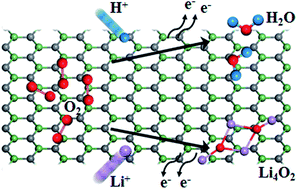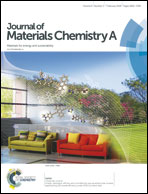Monolayer graphitic germanium carbide (g-GeC): the promising cathode catalyst for fuel cell and lithium–oxygen battery applications†
Abstract
Designing and searching high-efficient metal-free oxygen reduction reaction (ORR) catalysts are demanding objectives for academic and industrial researches. Herein, the ORR mechanism of monolayer graphitic germanium carbide (g-GeC) was studied by first-principles calculations. The monolayer g-GeC possesses excellent electro-catalytic properties that originate from the charge redistribution due to electronegativity difference. Adsorption and dissociation of oxygen can easily take place at room temperature, which facilitates the subsequent ORR catalysis. The feasibility and activity of monolayer g-GeC as a cathode catalyst in fuel cells and nonaqueous Li–O2 batteries were evaluated by plotting free energy diagrams. The calculation results revealed that the g-GeC displays very low overpotentials that are comparable to Pt-based catalysts. This study provides a novel understanding of the electrochemical performance of g-GeC materials, and suggests its great potential as a metal-free ORR catalyst to substitute the traditional Pt-based catalysts.



 Please wait while we load your content...
Please wait while we load your content...